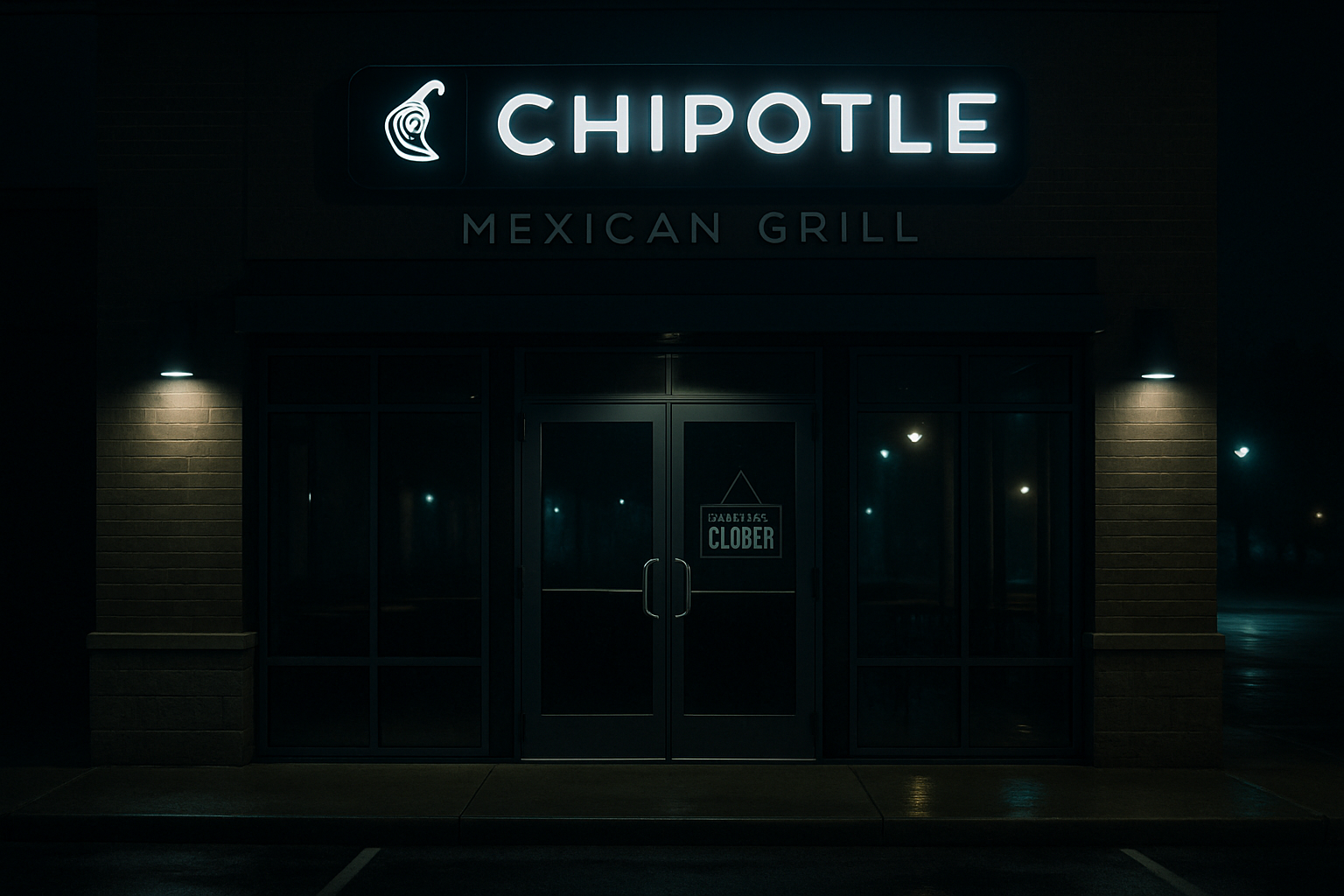
The recent Chipotle restaurant closures create doubts about how the company handles its present obstacles and long-term direction. This article conducts a detailed examination of what leads Chipotle to shut down locations together with brand effects and steps Chipotle uses to manage this assortment closure stage.
Factors Leading to Chipotle Closures
- The global economic environment features high inflation together with increasing labor expenses and elevated food ingredient costs. Financial pressures from the global economy strongly affected the restaurant industry, which impacted Chipotle operations. Operation costs at the company continue to increase, creating financial challenges for maintaining profitable market locations. Chipotle made the decision to permanently shut down poorly performing stores in order to diminish its financial losses.
- hastalık COVID-19 created permanent behavioral changes among consumers. Business at Chipotle allocation points, which cater to city traffic, has shown decreased revenue generation since these locations primarily served commuters and visitors. Certain stores have become too expensive to operate after the behavioral changes in consumer habits.
- Chipotle continues to face labor shortage problems that affect the entire restaurant sector, just like many other food organizations. Operational inefficiencies together with longer wait times and decreased customer satisfaction emerged because of difficulties retaining and hiring suitable staff. Staffing problems caused certain locations to shut their doors since these issues became too widespread to manage.
- Chipotle made excessive geographical expansion when it added many outlets across America and throughout international spaces. The business approach that started with enthusiasm failed to produce positive results in all circumstances. Chipotle experienced poor business performance in areas that did not generate enough customer demand to support restaurant operations, thus causing closures.
- Chipotle encountered noteworthy food safety events consisting of E. coli and norovirus outbreaks that negatively affected its reputation. The company adopted thorough safety standards to manage these problems, yet its damaged reputation continues to affect the business. Consumer trust disappeared in specific areas, which caused sales to decrease along with permanent closures of these affected locations.
Impact of Chipotle Closures
- The closure of non-profitable locations enables Chipotle to decrease operational costs and raise company performance, hence increasing profitability. The closure of stores requires Chipotle to spend substantial funds on lease terminations as well as employee severance packages and asset write-offs. The short-term financial pressure on company resources exists because of such costs, but they support long-term financial health.
- Although Chipotle’s financial performance and operational matters should be maintained behind the decision to close stores, the process leads customers to question Chipotle’s financial state and business management, creating potentially negative impacts on brand reputation. The company must maintain open communication with customers and investors to show that their closure decisions form part of a corporate strategy despite misleading brief appearances of business decline.
- Employee morale suffers due to store closures since the affected workers and others throughout the organization experience decreased morale because of widespread layoffs. Chipotle should build employee support programs that include severance packages and job search help to protect workforce trust while maintaining loyalty.
- Business alignment through location closures will direct Chipotle to benefit its resources within strong-performing markets. Through its strategy, the company can boost its market performance in locations with substantial customer interest, which creates better business competitiveness and sustainable company expansion.

Chipotle’s Strategic Response
- The increasing consumer desire for quick service has prompted Chipotle to build substantial digital operations. The company established its app website alongside its delivery partnerships as essential elements that form the core of its business system. The company’s efforts to manage online ordering and digital user experience improvement are designed to replace closed locations and increase market shares for delivery services and packaged takeout orders.
- Following the market requirement, Chipotle has launched new menu items as part of its strategy for competitive success alongside limited-time offerings. The new product offerings succeed in both drawing fresh customers and motivating current clients to visit again. The regular updates on its menu choices enable Chipotle to stay relevant in the busy fast-casual dining market.
- The establishment of these environmentally friendly practices connects with sustainable consumer preferences, which sets Chipotle apart from similar companies. The strategic expansion of sustainable business practices will enable Chipotle to build its brand character while accessing new consumer segments in the market.
- Chipotle focuses on foreign market development as it continues to close down certain U.S. locations. The company plans to expand into new territories, which will broaden its income sources and minimize its market dependence. The long-term growth and business resilience of Chipotle directly rely on its worldwide expansion efforts.
- Chipotle dedicates itself to upgrading both traditional shop and digital frontiers through which consumers connect with the brand. The company applies fast service and targeted promotions to establish customer loyalty, which leads to frequent business returns. Chipotle’s commitment to delivering high-quality service enables it to build stronger relationships with its target customers, which ensures their future business growth.
Future Outlook for Chipotle
Chipotle has decided to permanently close certain locations for the purpose of resolving economic problems together with changing consumer tastes and operational performance weaknesses. The restaurant closures present both challenges and advantages because the company can optimize its business model and direct its resources towards future development.
Chipotle must effectively adapt to new market conditions in order to achieve success in future operations. Chipotle controls a solid path for upcoming growth because it invests in digital initiatives alongside international market venturing and improves customer experiences. Chipotle proves its dedication to operational strength and innovative evolution through its forthcoming difficult market adjustments.
Conclusion
The market closures at Chipotle demonstrate how difficult business conditions affect the successful operation of this company today. Difficult decisions related to sustainability and profitability had to be made because of economic pressures combined with changing consumer behavior and operational difficulties. Chipotle uses strategic closures for operation enhancement while planning for long-term business growth. The company stands ready to face current industry challenges because it has focused development on digital operations combined with new menu options and sustainability initiatives.





